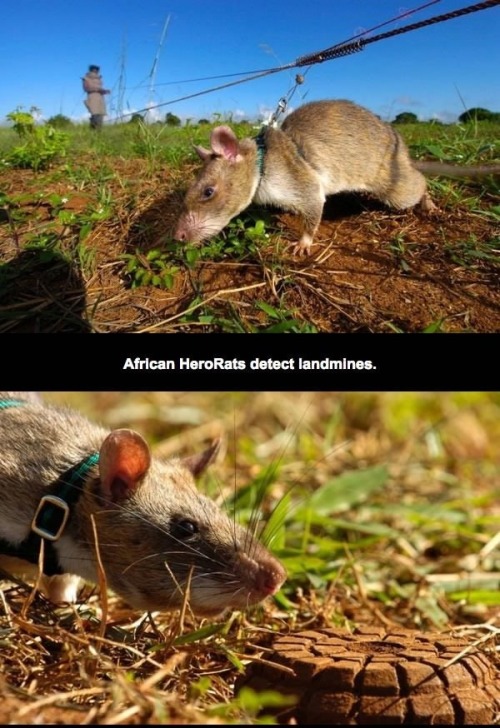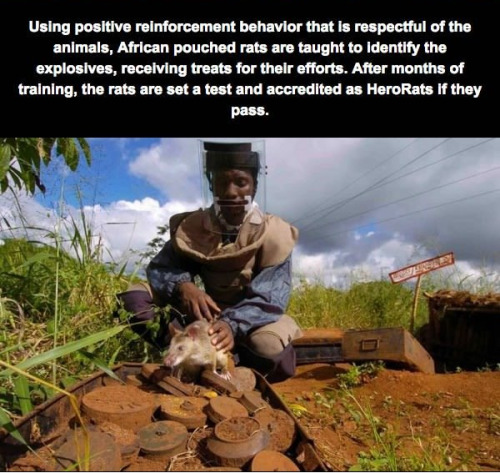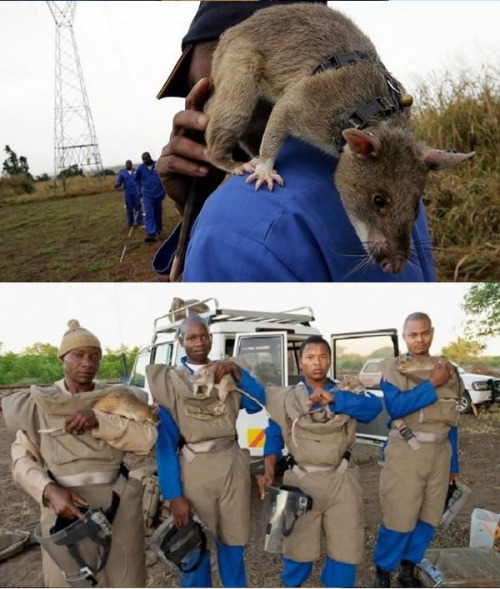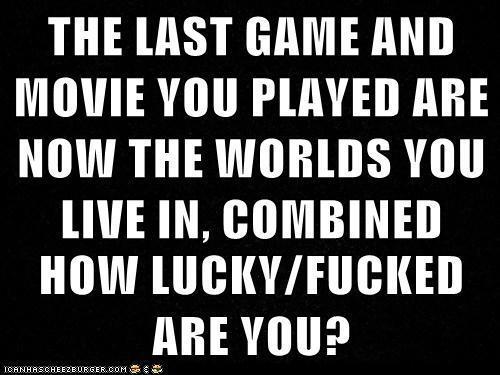Reblogging So I Remember. Character Research. I’ve Made A Half-elf, With A Drow Mother & Half-drow
Reblogging so I remember. Character research. I’ve made a half-elf, with a drow mother & half-drow father, raised in drow society particularly in a temple of Lolth. They worship a different goddess currently in the campaign, but it’s good know their roots better.
The Descent of the Drow
Requested by @adrainea for the lore giveaway.
Part 5 of 5: Mordenkainen’s Tome of Foes & Beyond
So where are we now? On May 18th/ May 29th 2018 (digital version/hard cover) WOTC released Mordenkainen’s Tome of Foes, and along with it some changes to this tale. Here’s my summary relevant to drow, though I highly encourage looking at the supplement its self. There’s much more to add, but I’m only including what is relevant to the question: What did dark elves do to become drow/banished?
Elves were formed from drops of Corellon’s blood when he fought a godly war against the orc god Gruumsh. Corellon was like “oh neat” and adopted these blood spawned beings as his children
He favoured a few of them and made them the Seladrine gods. One of them would become Lolth.
Corellon had no fixed form, Corellon could be a flock of birds, a woman, a man, a river. Like Corellon, elves too had no fixed true form and could choose.
One day Lolth picks a form, names herself Lolth and tells the other elven gods that they should choose fixed forms as well to have power and impact on the universe.
The some elven gods agree, some do not. Elves become divided into those who agree with Lolth and those who agree with Corellon.
Lolth tries to kill Corellon for her usual reasons, fails, Corellon finds he can no longer trust his children and casts out ALL elves from Arvandor – they get pushed into the Feywild where they now have fixed forms, even those who stood by Corellon. (?)
The elves decide to explore Toril and other lands because they are naturally curious and emotional creatures, hungering for new experiences after the loss of their “father.”
Some elves continue to worship Corellon, some Lolth, some other gods.

[I get on a plane in several hours so no time for arts. Please enjoy this art “ Temple of Lolth “ by Julian Kok, featured in Mordenkainen’s Tome of Foes] Closing thoughts:
Drow who repent can be gifted this ability to change form (biological sex) after a long rest. New lore states that all elves worshipped Lolth, not just the Ilythiiri. But they stopped and it was the dark elves who did not pull back. Whether this means all dark elves or only the Ilythiiri, is unclear.
If there’s a core thing to take away from MTOF it’s that: Drow aren’t born evil, not by race. They have a history, culture and environment that encourages certain behaviours. Remove them from that environment and they have a chance to change. If a drow, orc, or goblin, where born say in a good aligned city, grew up with humans, they would pretty much act as a human would, think and have values as their peers would. They’d look different, sure, their biology would have some effects, yeah. But they aren’t “born evil”. If you’re playing a drow (born in the Underdark into drow culture) it’s likely they will struggle with this inner darkness for a very long time, perhaps forever. And that’s fine. Such things are what make drow so thrilling to play. Despite being set up from birth to be drawn to darkness, they may overcome it, or use it in productive ways. I’ll leave you with this Paarthurnax quote, because I adore it and it’s relevant. “What is better ? to be born good or to overcome your evil nature through great effort ?” ~ Paarthurnax, Skyrim Be well friends, and may your characters be as varied and complex as you wish them to be.
More Posts from Libraryofalexandira11 and Others
Nods. I agree death is not the only self sacrifice. Others include: - sacrificing one's Personal moral standards for greater good of those who care about. Example: A character who ardently against mind control because they had been victimised by it themselves but was forced into a scenario where they had to use mind control or something more awful and abusive would occur to great number of people.
ok but like when did self-sacrifice become synonymous with death? writers seem to have forgotten that people can make personal sacrifices for the greater good without giving their lives. plots about self-sacrifice and selflessness don’t always have to end in death. suffering doesn’t have to be mourning. you can create drama and emotional depth on your show without killing everyone. learn to explore the meaning of living rather than dying
This is incredible








Join us in our talk on Torterra tree care, much needed after our PoGo community day recently.
This amazing advice, helpful, too. Reblogging, so I remember it.



Good stuff.
This is really interesting. Hero rats are admirable.






Hero Rats
(via https://www.youtube.com/watch?v=-JjhF5uuyzo)
Rebloggung to remember this for character analysis and writing purposes. Excellent break down and structure.
C-PTSD: So what is it, anyway?
original post found on Out of the Fog content warning: discussion of trauma, abuse, personality disorders, depression
DISCLAIMER: if you believe the following description of C-PTSD describes you, seek professional help immediately. C-PTSD, left untreated, is a serious disorder with the potential to cause long-term psychological, physical and interpersonal damage.
I reposted this information from Out of the Fog, not as a health professional, but as an abuse survivor who wants to empower other survivors.
Complex Post-Traumatic Stress Disorder (C-PTSD) is a psychological injury that results from prolonged exposure to social or interpersonal trauma, disempowerment, captivity or entrapment, with lack or loss of a viable escape route for the victim… such as in cases of:
domestic emotional, physical or sexual abuse
childhood emotional, physical or sexual abuse
entrapment or kidnapping.
slavery or enforced labor.
long term imprisonment and torture
repeated violations of personal boundaries.
long-term objectification.
exposure to gaslighting & false accusations
long-term exposure to inconsistent, push-pull,splitting or alternating raging & hooveringbehaviors.
long-term taking care of mentally ill or chronically sick family members.
long term exposure to crisis conditions.
When people have been trapped in a situation over which they had little or no control at the beginning, middle or end, they can carry an intense sense of dread even after that situation is removed. This is because they know how bad things can possibly be. And they know that it could possibly happen again. And they know that if it ever does happen again, it might be worse than before.
The degree of C-PTSD trauma cannot be defined purely in terms of the trauma that a person has experienced. It is important to understand that each person is different and has a different tolerance level to trauma. Therefore, what one person may be able to shake off, another person may not. Therefore more or less exposure to trauma does not necessarily make the C-PTSD any more or less severe.
C-PTSD sufferers may “stuff” or suppress their emotional reaction to traumatic events without resolution either because they believe each event by itself doesn’t seem like such a big deal or because they see no satisfactory resolution opportunity available to them. This suppression of “emotional baggage” can continue for a long time either until a “last straw” event occurs, or a safer emotional environment emerges and the damn begins to break.
The “Complex” in Complex Post Traumatic Disorder describes how one layer after another of trauma can interact with one another. Sometimes, it is mistakenly assumed that the most recent traumatic event in a person’s life is the one that brought them to their knees. However, just addressing that single most-recent event may possibly be an invalidating experience for the C-PTSD sufferer. Therefore, it is important to recognize that those who suffer from C-PTSD may be experiencing feelings from all their traumatic exposure, even as they try to address the most recent traumatic event.
This is what differentiates C-PTSD from the classic PTSD diagnosis - which typically describes an emotional response to a single or to a discrete number of traumatic events.
Difference between C-PTSD & PTSD
Although similar, Complex Post Traumatic Stress Disorder (C-PTSD) differs slightly from the more commonly understood & diagnosed condition Post Traumatic Stress Disorder (PTSD) in causes and symptoms.
C-PTSD results more from chronic repetitive stress from which there is little chance of escape. PTSD can result from single events, or short term exposure to extreme stress or trauma.
Therefore a soldier returning from intense battle may be likely to show PTSD symptoms, but a kidnapped prisoner of war who was held for several years may show additional symptoms of C-PTSD.
Similarly, a child who witnesses a friend’s death in an accident may exhibit some symptoms of PTSD but a child who grows up in an abusive home may exhibit the additional C-PTSD characteristics shown below.
What it Feels Like:
People who suffer from C-PTSD may feel un-centered and shaky, as if they are likely to have an embarrassing emotional breakdown or burst into tears at any moment. They may feel unloved - or that nothing they can accomplish is ever going to be “good enough” for others.
People who suffer from C-PTSD may feel compelled to get away from others and be by themselves, so that no-one will witness what may come next. They may feel afraid to form close friendships to prevent possible loss should another catastrophe strike.
People who suffer from C-PTSD may feel that everything is just about to go “out the window” and that they will not be able to handle even the simplest task. They may be too distracted by what is going on at home to focus on being successful at school or in the workplace.
Characteristics
How it can manifest in the victim(s) over time:
Rage turned inward: Eating disorders. Depression. Substance Abuse / Alcoholism. Truancy. Dropping out. Promiscuity. Co-dependence. Doormat syndrome (choosing poor partners, trying to please someone who can never be pleased, trying to resolve the primal relationship) Rage turned outward: Theft. Destruction of property. Violence. Becoming a control freak. Other: Learned hyper vigilance. Clouded perception or blinders about others (especially romantic partners) Seeks positions of power and / or control: choosing occupations or recreational outlets which may put oneself in physical danger. Or choosing to become a “fixer” - Therapist, Mediator, etc.
Avoidance - The practice of withdrawing from relationships with other people as a defensive measure to reduce the risk of rejection, accountability, criticism or exposure.
Blaming - The practice of identifying a person or people responsible for creating a problem, rather than identifying ways of dealing with the problem.
Catastrophizing - The habit of automatically assuming a “worst case scenario” and inappropriately characterizing minor or moderate problems or issues as catastrophic events.
“Control-Me” Syndrome - This describes a tendency which some people have to foster relationships with people who have a controlling narcissistic, antisocial or “acting-out” nature.
Denial - Believing or imagining that some painful or traumatic circumstance, event or memory does not exist or did not happen.
Dependency - An inappropriate and chronic reliance by an adult individual on another individual for their health, subsistence, decision making or personal and emotional well-being.
Depression (Non-PD) -Depression is when you feel sadder than your circumstances dictate, for longer than your circumstances last, but still can’t seem to break out of it.
Escape To Fantasy - Taking an imaginary excursion to a happier, more hopeful place.
Fear of Abandonment - An irrational belief that one is imminent danger of being personally rejected, discarded or replaced.
Hyper Vigilance - Maintaining an unhealthy level of interest in the behaviors, comments, thoughts and interests of others.
Identity Disturbance - A psychological term used to describe a distorted or inconsistent self-view
Learned Helplessness- Learned helplessness is when a person begins to believe that they have no control over a situation, even when they do.
Low Self-Esteem - A common name for a negatively-distorted self-view which is inconsistent with reality.
Panic Attacks - Short intense episodes of fear or anxiety, often accompanied by physical symptoms, such as hyperventilating, shaking, sweating and chills.
Perfectionism - The maladaptive practice of holding oneself or others to an unrealistic, unattainable or unsustainable standard of organization, order, or accomplishment in one particular area of living, while sometimes neglecting common standards of organization, order or accomplishment in other areas of living.
Selective Memory and Selective Amnesia - The use of memory, or a lack of memory, which is selective to the point of reinforcing a bias, belief or desired outcome.
Self-Loathing - An extreme hatred of one’s own self, actions or one’s ethnic or demographic background.
Tunnel Vision - A tendency to focus on a single concern, while neglecting or ignoring other important priorities.
Treatment
Little has been done in clinical studies of treatment of C-PTSD. However, in general the following is recommended:
Removal of and protection from the source of the trauma and/or abuse.
Acknowledgement of the trauma as real, important and undeserved.
Acknowledge that the trauma came from something that was stronger than the victim and therefore could not be avoided.
Acknowledgement of the “complex” nature of C-PTSD - that responses to earlier traumas may have led to decisions that brought on additional, undeserved trauma.
Acknowledgement that recovery from the trauma is not trivial and will require significant time and effort.
Separation of residual problems into those that the victim can resolve (such as personal improvement goals) and those that the victim cannot resolve (such as the behavior of a disordered family member)
Mourning for what has been lost and cannot be recovered.
Identification of what has been lost and can be recovered.
Program of recovery with focus on what can be improved in an individual’s life that is under their own control.
Placement in a supportive environment where the victim can discover they are not alone and can receive validation for their successes and support through their struggles.
As necessary, personal therapy to promote self-discovery.
As required, prescription of antidepressant medications.
What to do about C-PTSD if you’ve got it:
Remove yourself from the primary or situation or secondary situations stemming from the primary abuse. Seek therapy. Talk about it. Write about it. Meditation. Medication if needed. Physical Exercise. Rewrite the script of your life. What not to do about it: Stay. Hold it in. Bottle it up. Act out. Isolate. Self-abuse. Perpetuate the cycle.
What to do about it if you know somebody else who has C-PTSD:
Offer sympathy, support, a shoulder to cry on, lend an ear. Speak from experience. Assist with practical resolution when appropriate (guidance towards escape, therapy, etc.) Be patient. What not to do about it if you know somebody else who has it: Do not push your own agenda: proselytize, moralize, speak in absolutes, tell them to “get over it”, or try to force reconciliation with the perpetrator or offer “sure fire” cures.
Links
PTSD Forum Contains a Wiki page and Active Support Forum.
Psych Forums PTSD Forum.
http://healmyptsd.com/ Resources & info about recovery from PTSD & C-PTSD
C-PTSD Page - by Author Sarah Tata
Trauma: Complex PTSD MentalHelp.net C-PTSD Article by Dr. Allan Schwartz
Out of the Storm - Support Group for people who suffer from C-PTSD.
Out of the FOG Support Forum - The Support Forum here at Out of the FOG.
Katsuya & Tatsuya are already there. Plus Akihiko's on his way there, pretty soon if the trend keeps up, there'll be entire police force of Persona-users.
For some reason I can see Yu becoming a cop possibly cause he's aware of how he and Adachi where similar so maybe he wanted to prove he's different by being a cop and not ending up like Adachi. but also cause Dojima made an impression on him being the only adult figure to pay him decent attention o maybe he wanted to be like him. but also cause Yu wants to protect and help People. just my thought on Yu's possible future which we got no hint about
Well, with Chie already becoming a cop and Naoto being a detective, this would place, like, half the IT in law enforcement. It’s a really nice headcanon though. I really think it could work.
Incredibles 2 & Pillars of Eternity odd combo

This is cool, and interesting there’s three big meeting of superheroes and the only ones who don’t descend in fighting each other over differences in opinion are Supergirl and the Flash. I don’t mind the conflict that other pairings have, but it’s refreshing to have superheros interact and it be fun. I’m really looking forward to see all of these though.


♫ One of these things is not like the others… ♫
-
 munnchausenzip liked this · 1 year ago
munnchausenzip liked this · 1 year ago -
 korcariiwitch liked this · 1 year ago
korcariiwitch liked this · 1 year ago -
 cyanthus liked this · 2 years ago
cyanthus liked this · 2 years ago -
 thisisgrass liked this · 2 years ago
thisisgrass liked this · 2 years ago -
 katie-sheep-111 liked this · 3 years ago
katie-sheep-111 liked this · 3 years ago -
 xdhx liked this · 3 years ago
xdhx liked this · 3 years ago -
 tsitsimit liked this · 3 years ago
tsitsimit liked this · 3 years ago -
 lordofhounds liked this · 3 years ago
lordofhounds liked this · 3 years ago -
 mysterielady liked this · 3 years ago
mysterielady liked this · 3 years ago -
 saintciaran liked this · 3 years ago
saintciaran liked this · 3 years ago -
 pondofreflection liked this · 4 years ago
pondofreflection liked this · 4 years ago -
 shomriel reblogged this · 4 years ago
shomriel reblogged this · 4 years ago -
 layotam liked this · 4 years ago
layotam liked this · 4 years ago -
 jacinvoorhees liked this · 4 years ago
jacinvoorhees liked this · 4 years ago -
 mloneii liked this · 4 years ago
mloneii liked this · 4 years ago -
 hendrex-eternal liked this · 4 years ago
hendrex-eternal liked this · 4 years ago -
 pastel-and-explosives liked this · 4 years ago
pastel-and-explosives liked this · 4 years ago -
 a-real-ton-of-nothing-important liked this · 4 years ago
a-real-ton-of-nothing-important liked this · 4 years ago -
 ilovemywifenatalie liked this · 4 years ago
ilovemywifenatalie liked this · 4 years ago -
 theroadreader liked this · 4 years ago
theroadreader liked this · 4 years ago -
 unnaturaldeeds liked this · 4 years ago
unnaturaldeeds liked this · 4 years ago -
 dancing--lights liked this · 4 years ago
dancing--lights liked this · 4 years ago -
 randomuser1411 liked this · 4 years ago
randomuser1411 liked this · 4 years ago -
 fledgling-witch liked this · 4 years ago
fledgling-witch liked this · 4 years ago -
 canastigone liked this · 4 years ago
canastigone liked this · 4 years ago -
 xirinnyofalesildorah liked this · 4 years ago
xirinnyofalesildorah liked this · 4 years ago -
 c-guard liked this · 4 years ago
c-guard liked this · 4 years ago -
 blackbolt56 liked this · 4 years ago
blackbolt56 liked this · 4 years ago -
 musiker4 reblogged this · 4 years ago
musiker4 reblogged this · 4 years ago -
 orclesbiangf liked this · 5 years ago
orclesbiangf liked this · 5 years ago -
 chaosqueencierra liked this · 5 years ago
chaosqueencierra liked this · 5 years ago -
 pixelated-pineapple liked this · 5 years ago
pixelated-pineapple liked this · 5 years ago -
 booksandicedtea liked this · 5 years ago
booksandicedtea liked this · 5 years ago -
 wibblywobblydragonywagonystuff liked this · 5 years ago
wibblywobblydragonywagonystuff liked this · 5 years ago -
 shy-birdd liked this · 5 years ago
shy-birdd liked this · 5 years ago -
 lostanonimp liked this · 5 years ago
lostanonimp liked this · 5 years ago -
 sanyairana liked this · 5 years ago
sanyairana liked this · 5 years ago -
 degeneratekilljoy1 liked this · 5 years ago
degeneratekilljoy1 liked this · 5 years ago -
 waporlock liked this · 5 years ago
waporlock liked this · 5 years ago -
 myveryownkoala liked this · 5 years ago
myveryownkoala liked this · 5 years ago -
 thispuertoricangirl liked this · 5 years ago
thispuertoricangirl liked this · 5 years ago
Persona, Fire Emblem Awakening and Dragon Age Ace fan girl.
201 posts








